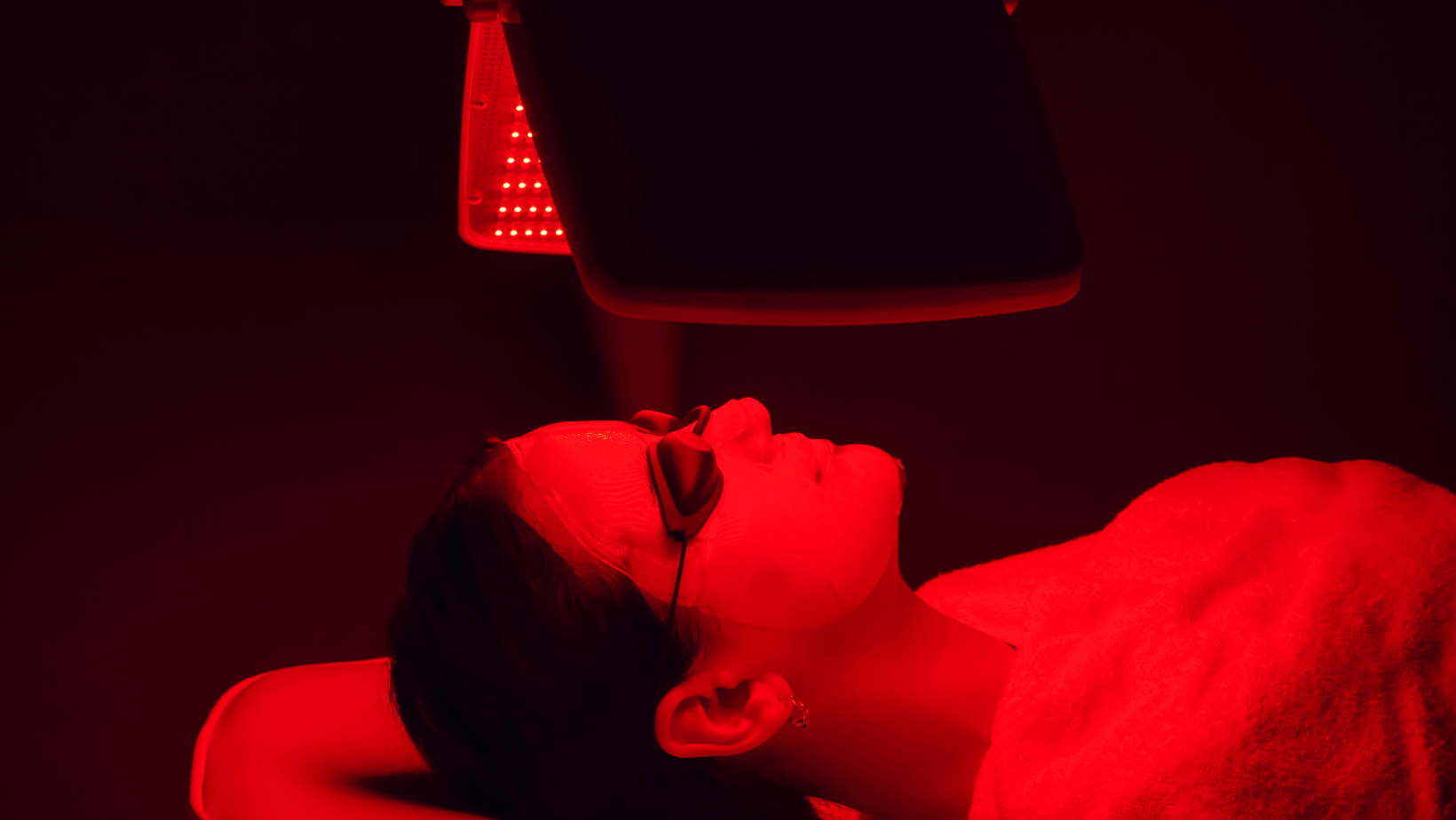Dealing with dark patches or spots on your skin can be frustrating, especially when you’re unsure about their cause or how to treat them. Melasma and sun spots are two common types of hyperpigmentation that people often confuse. While they might look similar at first glance, understanding the differences between them can help you choose the best treatment options and avoid making the problem worse.
In this article, we’ll dive deep into the differences between melasma and sun spots and discuss effective treatment options.
What is Melasma?
Melasma is a chronic skin condition that appears as brown or gray-brown patches on your face and surrounding skin. These patches often show up symmetrically on the cheeks, forehead, nose, or upper lip.
Melasma is sometimes called the “mask of pregnancy” because many women experience it during pregnancy due to hormonal changes. However, melasma can affect anyone, regardless of gender or age.
There are three types of melasma:
- Epidermal Melasma: Characterized by dark brown patches in the top layer of the skin (the epidermis).
- Dermal Melasma: Characterized by lighter brown or blue patches in the deeper layers of the skin (the dermis).
- Mixed Melasma: The most common type, which includes characteristics of both epidermal and dermal melasma.
What Causes Melasma?
Melasma is often triggered by hormonal changes, making it more common in pregnant women and people taking birth control pills. However, other factors like genetics, sun exposure, and thyroid disease can also play a role in the development of melasma.
The sun is a big factor in melasma because UV rays can trigger the production of melanin, the pigment responsible for skin color. People with darker skin tones are more likely to develop melasma due to genetic predisposition to having more active melanocytes.
What Are Sun Spots?
Sun spots, also known as age spots or liver spots, are flat, tan to brown spots caused by long-term exposure to the sun’s UV rays. Unlike melasma, sun spots are usually isolated and can vary in size. They often appear on the face, shoulders, arms, and hands—basically, any area frequently exposed to the sun. While sun spots are not harmful, many people choose to treat them for cosmetic reasons.
Key Differences Between Melasma and Sun Spots
At first glance, melasma and sunspots may appear similar, but they have some significant differences:
1. Appearance: Melasma often appears as larger, symmetrical patches, while sun spots are usually smaller and isolated.
2. Causes: Melasma is influenced by hormonal changes and sun exposure, while sun spots are strictly caused by cumulative sun damage.
3. Treatment Approaches: Melasma requires gentle, non-invasive treatments, while sun spots can be treated with more aggressive methods like lasers.

Melasma Treatment
If you’re struggling with melasma, it’s crucial to avoid harsh treatments like laser therapy, as these can actually make melasma worse by pushing pigment deeper into the skin. Instead, focus on using products that brighten the skin without being too harsh.
Amaira's SOS Intensive Skin Lightening Cream is an excellent choice because it contains natural brightening ingredients like Hexylresorcinol. This ingredient is derived from rye and other cereals, and it inhibits the production of melanin to create a bright, even skin tone.
The Benefits of Amaira's SOS Intensive Skin Lightening Cream
Amaira's SOS Intensive Skin Lightening Cream is ideal for treating melasma because it targets dark patches and hyperpigmentation without causing irritation. It is made from natural plant-based ingredients that are gentle on the skin, making it safe for all skin types.
The cream also contains antioxidants and nutrients that moisturize the skin and improve its texture. When used regularly, this cream can help you achieve a more even skin tone and brighter complexion.
For faster and more effective results, pair the SOS Intensive Skin Lightening Cream with Amaira’s Brightening Accelerator Wash. This gentle, pH-balanced wash exfoliates the skin and contains brightening properties to help speed up your lightening journey.
How to Treat Sun Spots on Your Face
Sun spots are stubborn, and they won’t go away on their own. However, there are several treatment options available to reduce their appearance:
1. Topical Creams: Using a lightening cream can help fade sun spots gradually. This cream’s unique blend of natural ingredients works to lighten hyperpigmentation without irritating the skin.
2. Chemical Peels: Chemical peels can help remove dead skin cells and reveal fresher, clearer skin underneath. They can be effective for lightening sun spots and improving overall skin tone.
3. Laser Treatments: For more severe sun spots, laser treatments can be an option. However, it’s essential to consult a dermatologist to ensure this treatment is safe for your skin type.
How to Tell the Difference Between Melasma and Sun Spots
It can be challenging to distinguish between melasma and sun spots without the help of a dermatologist. However, here are a few key differences to look for:
- Melasma: Usually appears as large, dark patches that are symmetrical and most often found on the face.
- Sun Spots: Tend to be smaller, isolated spots that appear on areas frequently exposed to the sun.

Is Melasma Sun Damage?
Melasma is not the same as sun damage, but repeated sun exposure can certainly make it worse. Melasma is often caused by a combination of factors, including hormonal changes, genetics, and sun exposure.
Sun damage, on the other hand, results from overexposure to UV rays and can cause various skin issues, including sun spots, fine lines, wrinkles, and even skin cancer.
Does Sun Damage Cause Melasma?
Sun damage is a common trigger for melasma, as UV rays stimulate melanocytes to produce more pigment. If you have melasma, protecting your skin from the sun is crucial to prevent it from worsening. This means wearing a broad-spectrum sunscreen with at least SPF 50, avoiding peak sun hours, and wearing protective clothing like hats and sunglasses.
Sun Spots Treatment Options
When it comes to treating sun spots, prevention is key, but if you already have them, here are some ways to address them:
1. Topical Creams: Products like Amaira's SOS Intensive Skin Lightening Cream can help reduce the appearance of sun spots over time. With natural ingredients and powerful antioxidants, this cream can lighten dark patches while keeping your skin hydrated.
2. Chemical Peels: Chemical peels work by removing dead skin cells and encouraging the growth of new, healthy skin. This treatment can be effective for reducing sun spots and achieving a more even skin tone.
3. Laser Treatments: Lasers can be used to target sun spots and break up the excess pigment. However, this treatment isn’t recommended for melasma, as it can sometimes make the condition worse.
Can Melasma Go Away on Its Own?
In some cases, melasma can fade over time, especially if it was triggered by pregnancy or hormone treatments. However, for most people, melasma is a chronic condition that requires consistent care to keep it under control. By using the right skincare products and protecting your skin from the sun, you can manage melasma more effectively.
Preventing Sun Spots on Your Face
Preventing sun spots is all about limiting your exposure to harmful UV rays. Here are a few easy tips to help you protect your skin:
1. Use Sunscreen Daily: Apply a broad-spectrum sunscreen with SPF 50 or higher every day, even when it’s cloudy. Reapply every two hours if you’re spending time outdoors.
2. Wear Protective Clothing: Hats, sunglasses, and long-sleeved shirts can help shield your skin from the sun’s rays.
3. Seek Shade: Limit time in direct sunlight, especially between 10 a.m. and 4 p.m. when UV rays are strongest.

Frequently Asked Questions (FAQs)
1. What is the main difference between melasma and sun spots?
Melasma and sun spots are both types of hyperpigmentation, but they have different causes and appearances. Melasma usually presents as larger, darker patches of skin that are symmetrical, often due to hormonal changes, sun exposure, or genetics. Sun spots, on the other hand, are small, flat, tan or brown spots caused solely by sun exposure and are often found on areas frequently exposed to the sun.
2. What causes melasma?
Melasma is commonly triggered by hormonal changes, such as pregnancy or the use of birth control pills. It can also be influenced by genetics, sun exposure, or even certain medications. Melasma often appears on the face, especially the cheeks, forehead, and upper lip.
3. Are sun spots and melasma caused by the sun?
Both melasma and sun spots can be triggered or worsened by sun exposure. UV rays stimulate melanin production, which can lead to the formation of dark patches in both conditions. However, while sun exposure plays a significant role in both, melasma is also heavily influenced by hormonal changes.
4. Can melasma be cured?
Melasma is a chronic condition, meaning that while it can be managed and its appearance improved, it may not go away completely. Treatment options include topical creams, chemical peels, and other gentle skincare products. Strict sun protection is key to preventing flare-ups.
5. How can I treat sun spots on my face?
Sun spots can be treated using topical creams, chemical peels, and laser treatments. Amaira's SOS Intensive Skin Lightening Cream is an effective product for gradually lightening sun spots without causing irritation. Sun protection, like daily use of sunscreen, is essential to prevent new sun spots from forming.
6. Is melasma the same as sun damage?
No, melasma is not the same as sun damage. While excessive sun exposure can trigger or worsen melasma, it is often caused by a combination of factors, including hormonal changes and genetics. Sun damage, on the other hand, is caused solely by overexposure to UV rays and can result in various skin issues, including sun spots, wrinkles, and even skin cancer.
7. Can sunspots go away on their own?
Sunspots usually do not fade on their own and often require treatment to reduce their appearance. Topical treatments, along with other forms of chemical peels or laser treatments, can help fade sun spots effectively.
8. Is it safe to use laser treatments for melasma?
Laser treatments are not recommended for melasma, as they can worsen the condition by pushing the pigment deeper into the skin. Instead, focus on using gentle brightening products to treat melasma, which work to lighten dark patches without causing irritation.

9. Can melasma be prevented?
While you can’t always prevent melasma, taking steps like wearing broad-spectrum sunscreen, avoiding peak sun hours, and using protective clothing can reduce the risk of flare-ups. Managing hormonal triggers, when possible, can also help.
10. What is the best product for treating melasma and sun spots?
Amaira's SOS Intensive Skin Lightening Cream is a highly effective product for treating both melasma and sun spots. It contains brightening ingredients that help even out skin tone while keeping your skin hydrated and healthy. Pair it with Amaira’s Brightening Accelerator Wash for even faster results.
This FAQ section aims to clarify the differences between melasma and sun spots, their causes, and the best ways to treat them. For personalized skincare recommendations, it’s always best to consult with a dermatologist.

Conclusion
Hyperpigmentation can be a frustrating skin issue, but understanding the differences between melasma and sun spots can help you find the best treatment options. Melasma often requires ongoing care with gentle products, while sun spots can be treated with more targeted approaches.
If you’re dealing with some dark spots or patches on your skin, consider using Amaira Skincare’s SOS Intensive Skin Lightening Cream and Brightening Accelerator Wash to achieve a brighter, more even complexion. With the right skincare routine and proper sun protection, you can keep your skin looking healthy and youthful.
By focusing on a consistent routine and using products designed for your specific needs, such as Amaira’s lightening cream and wash, you can tackle both melasma and sun spots effectively. Remember, prevention is just as important as treatment for skin conditions, so always protect your skin from sun exposure to maintain a healthy, glowing complexion.











